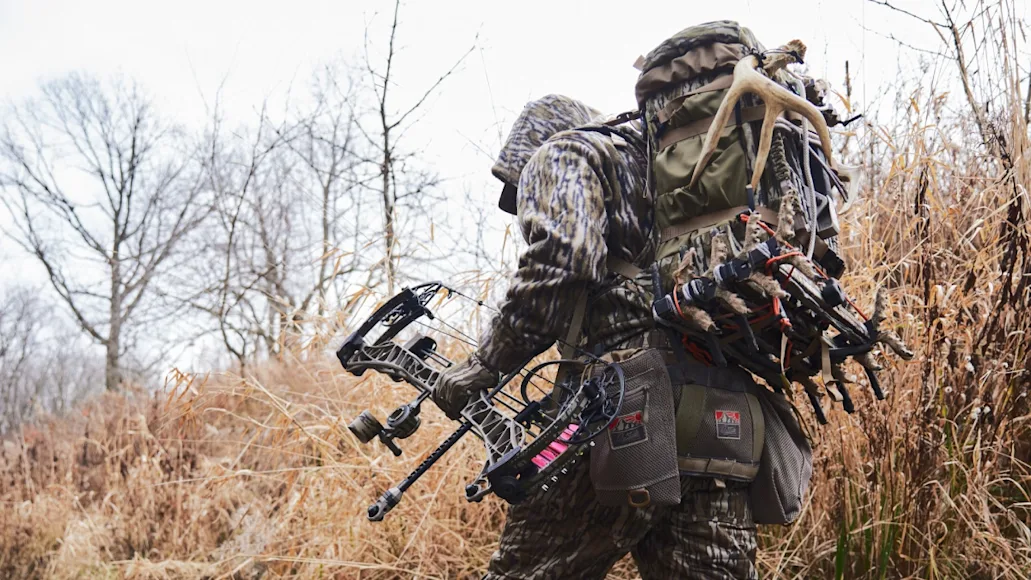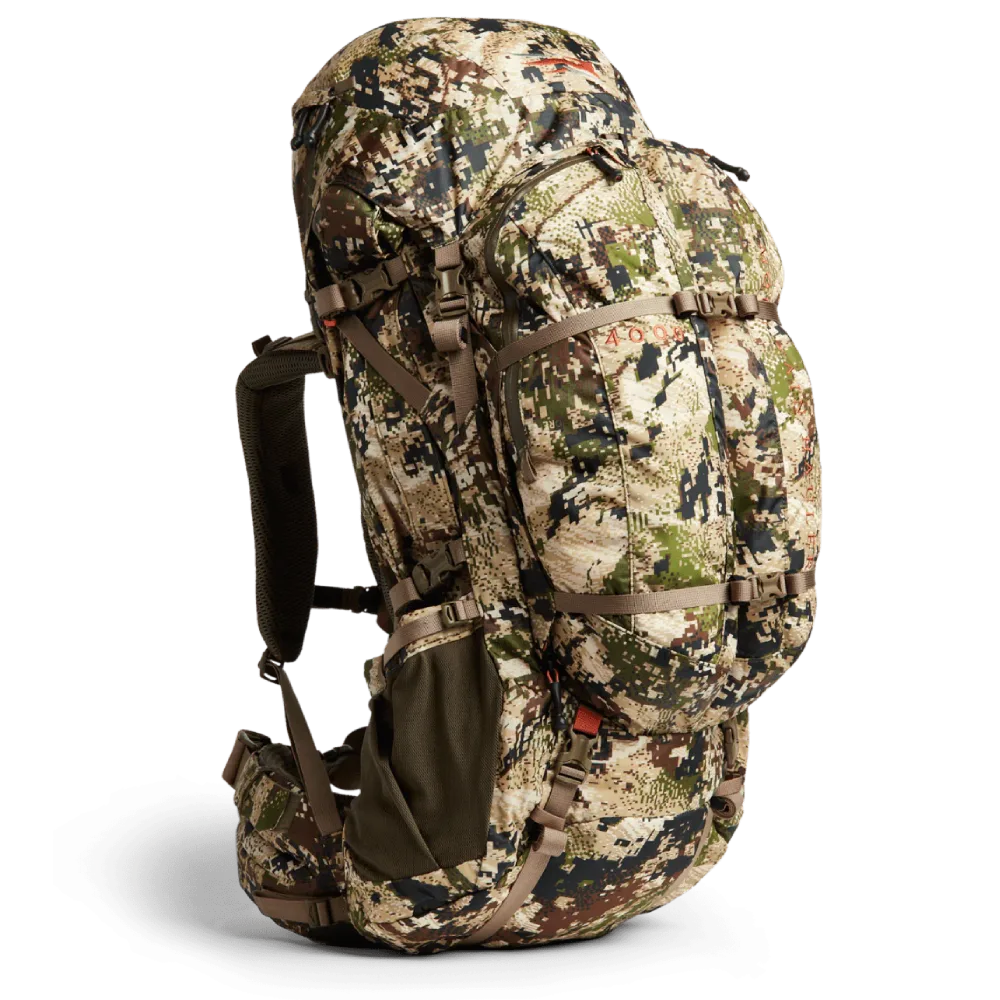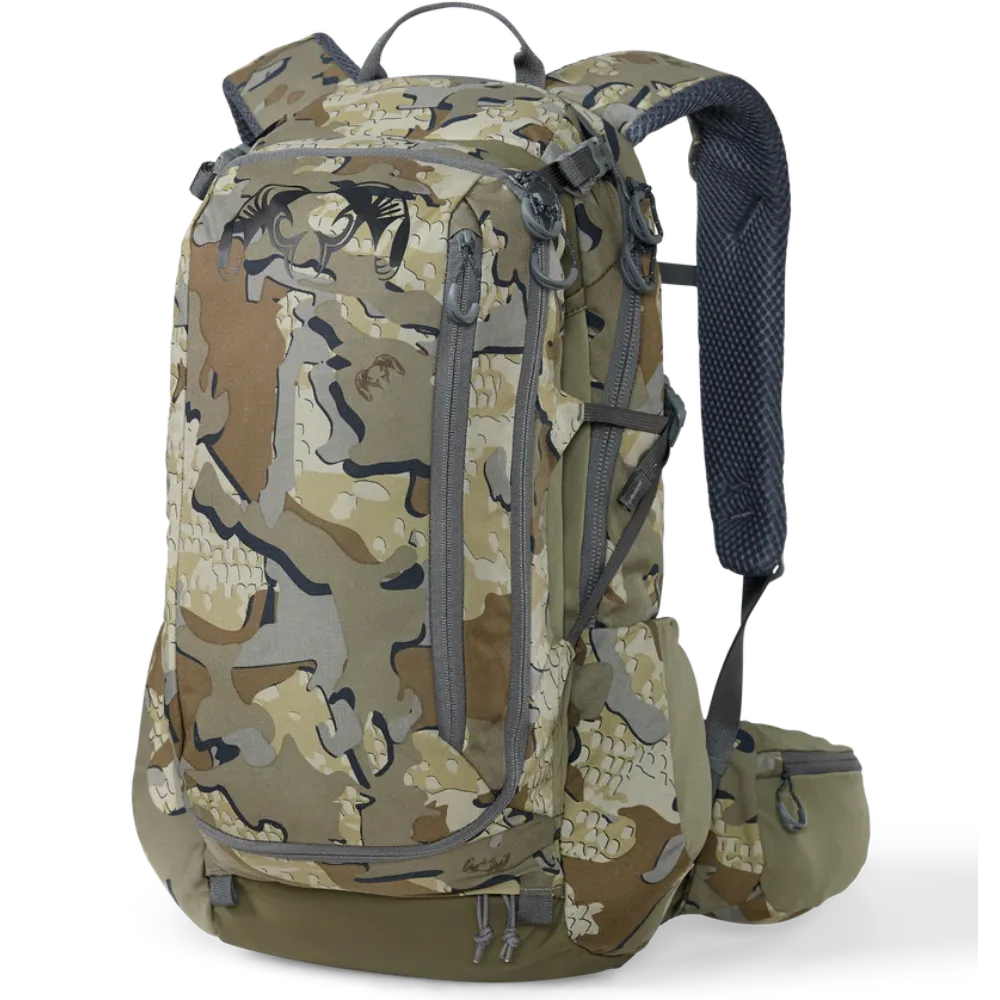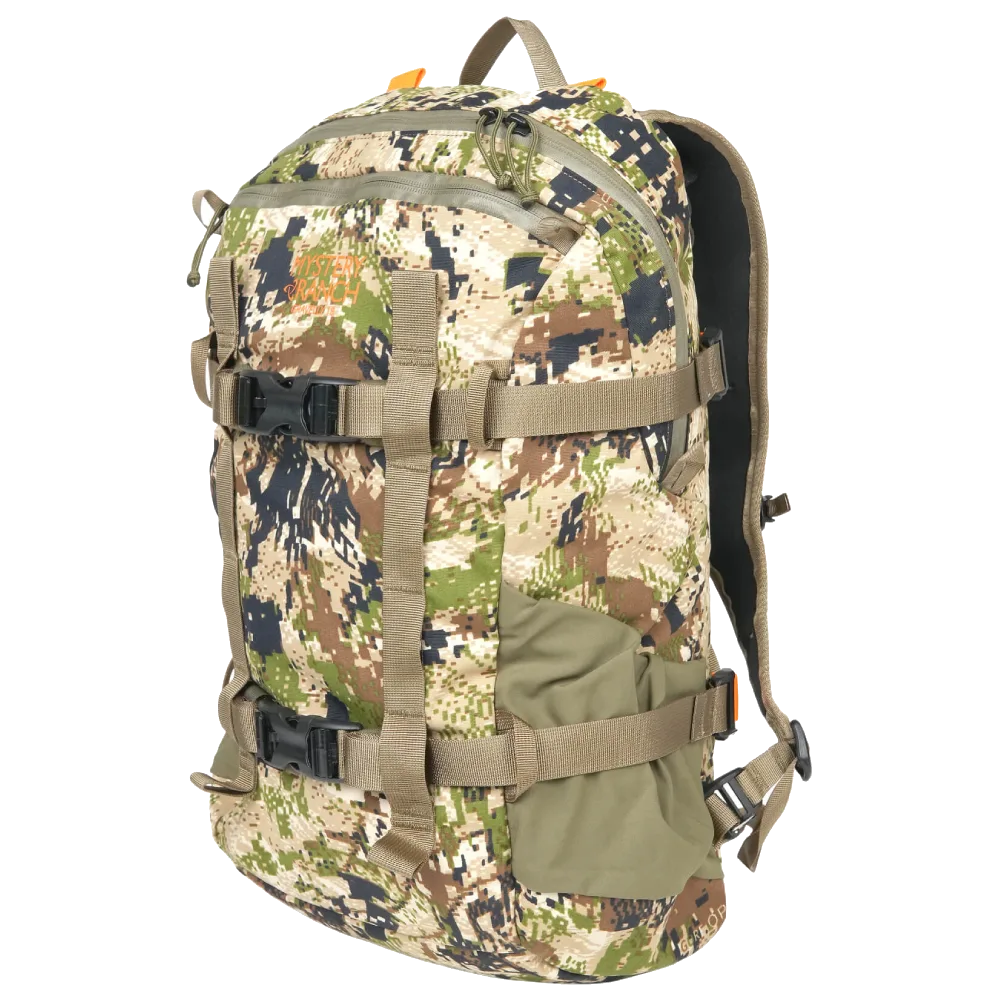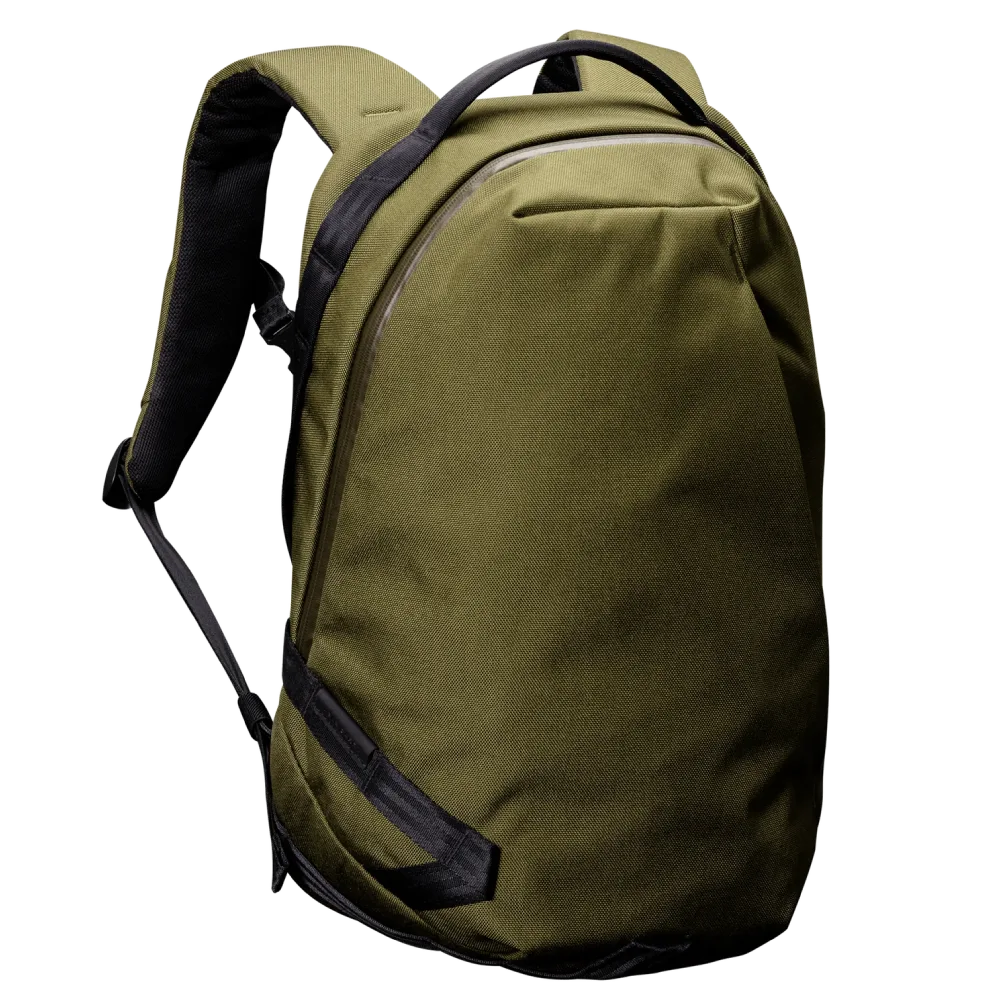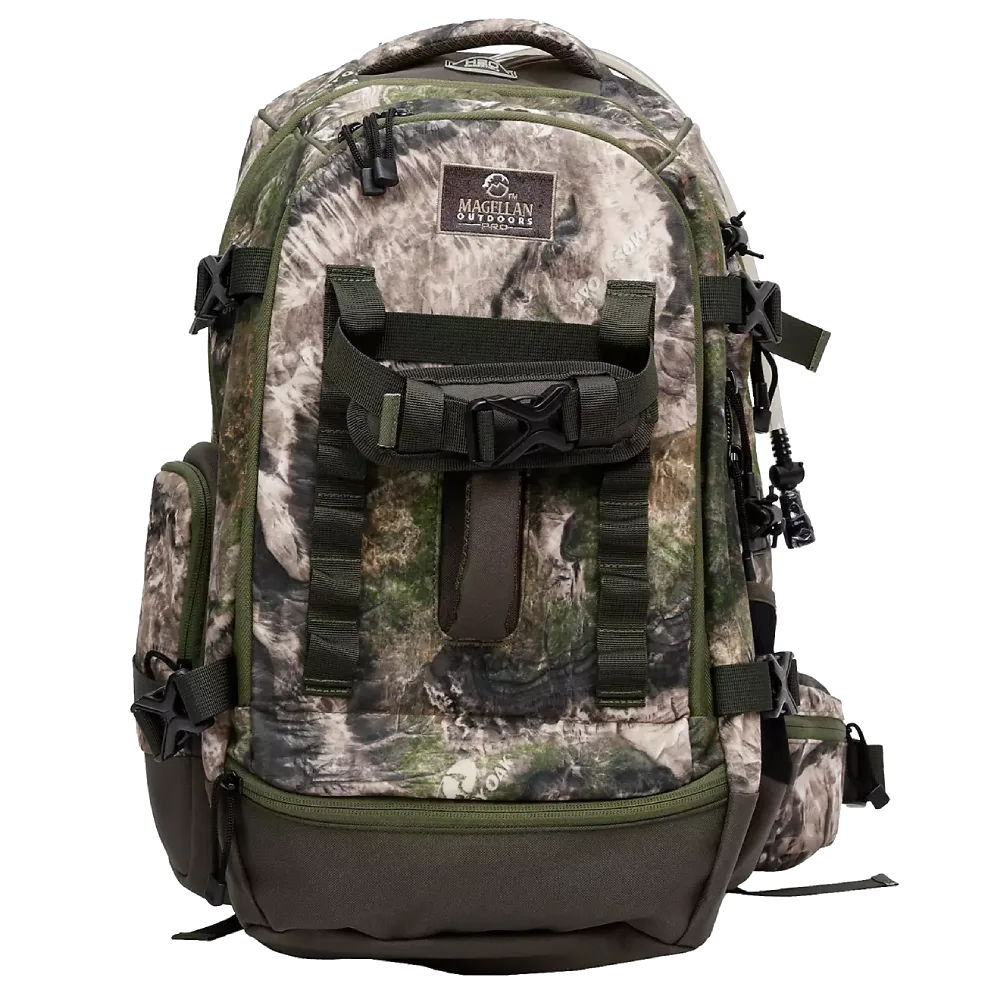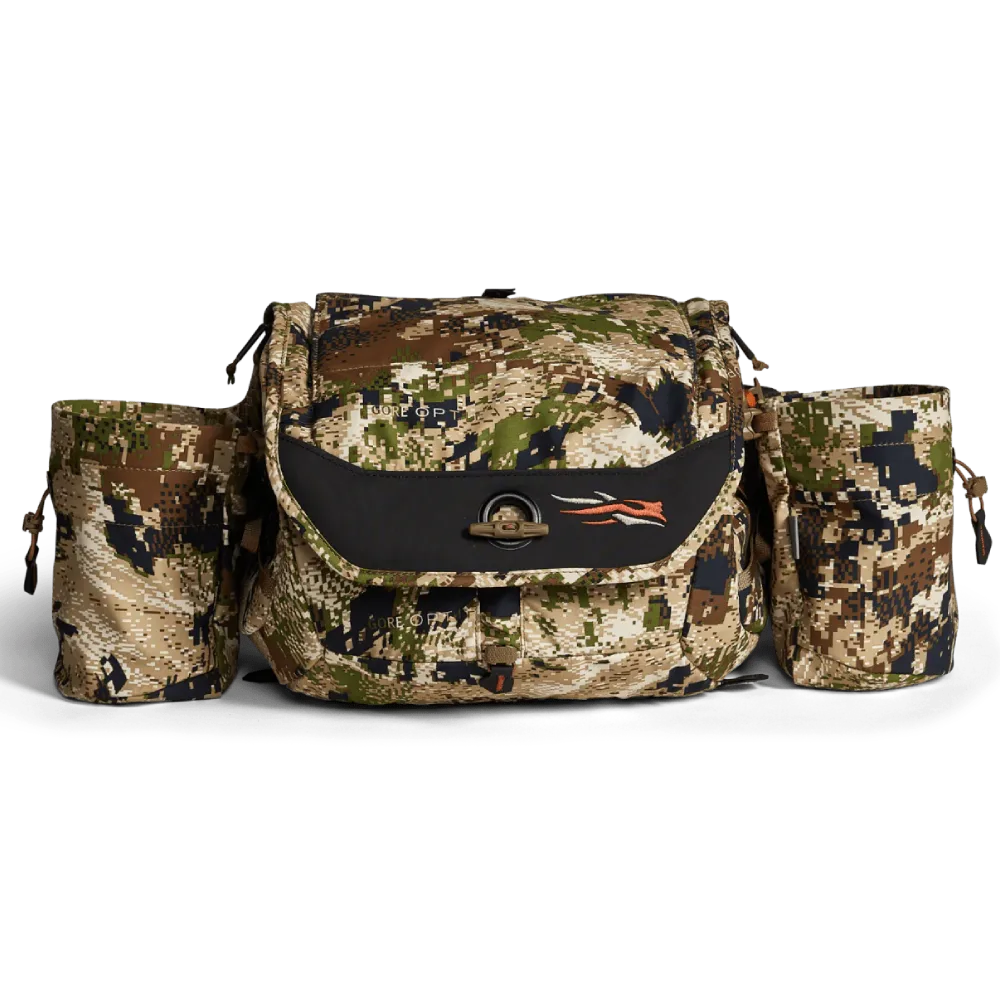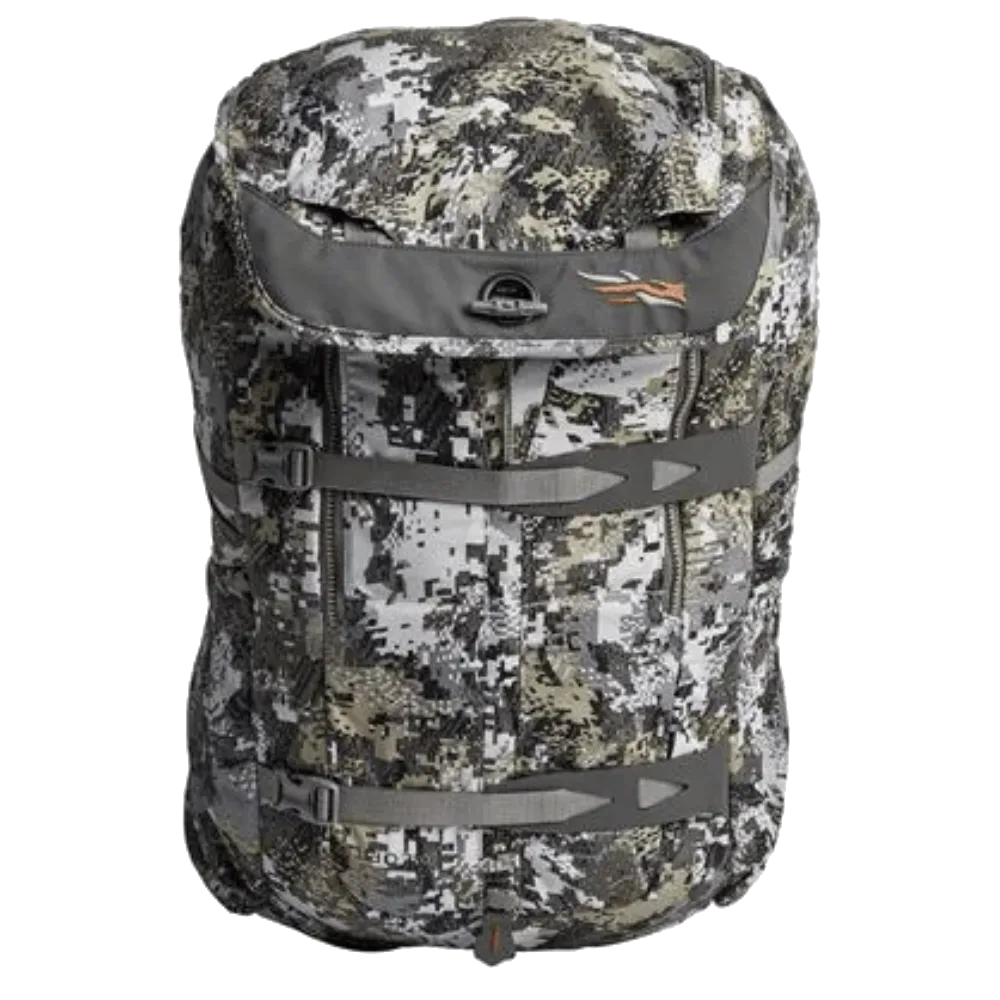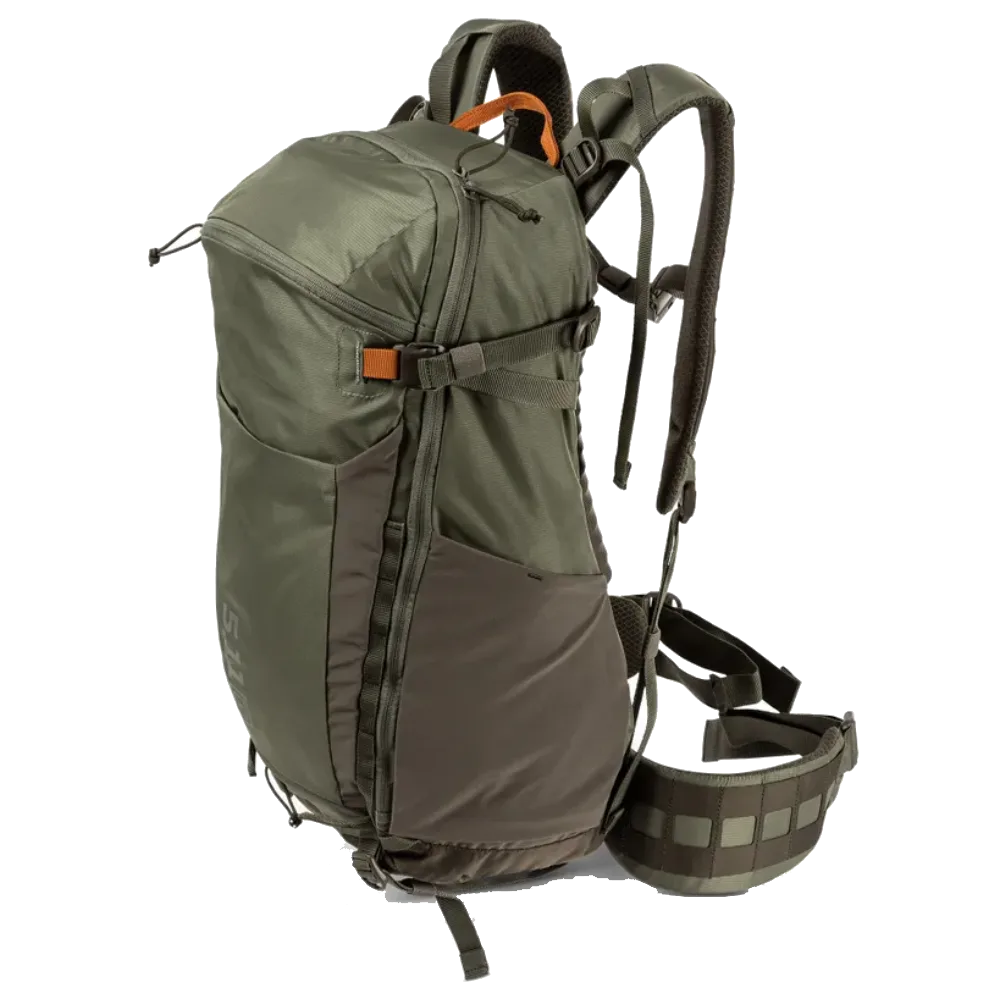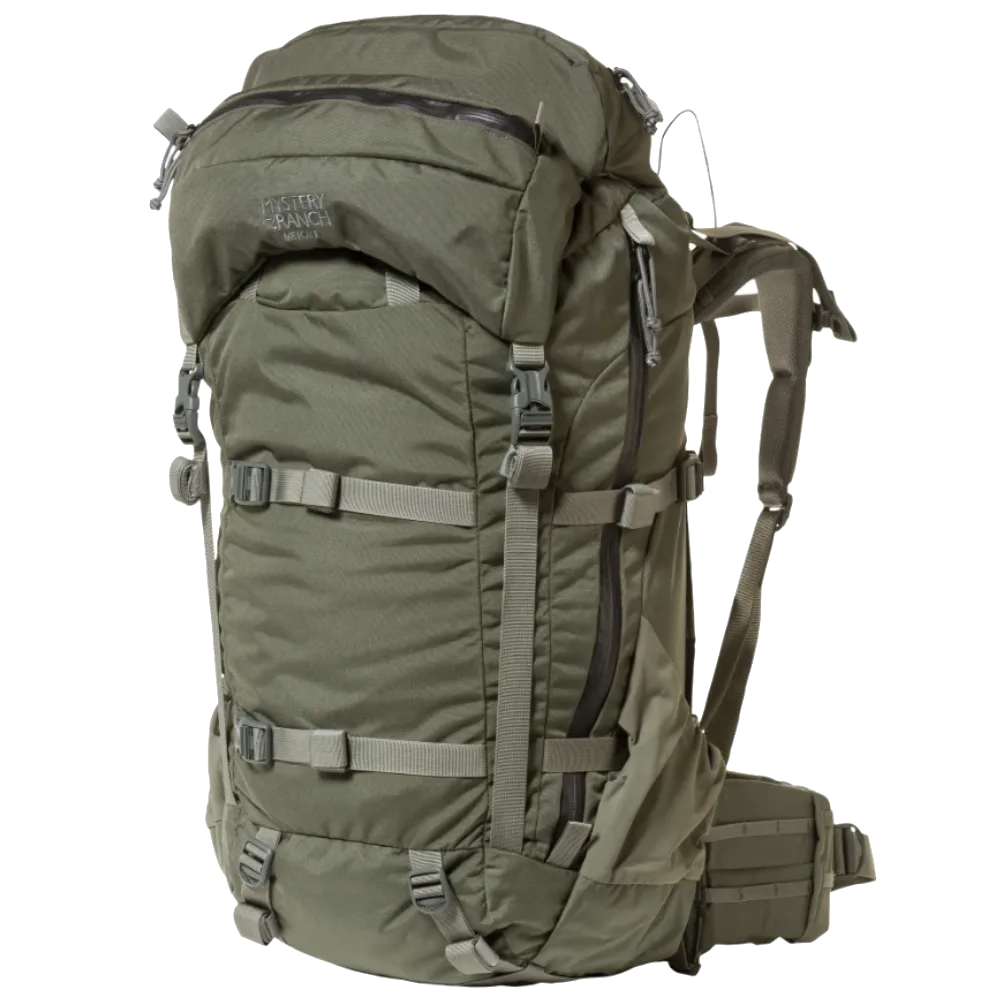Every year, the load of gear I need to carry afield while hunting seems to increase. Hunting knives, elk calls, gloves, binoculars, snacks, camera gear, phone battery banks—all of it needs a place. The weight and discomfort can become overwhelming with only a few pockets in my jacket and pants. Thankfully, hunting packs have evolved to be a convenient solution to my gear-carrying woes.
With new packs being released for case-specific hunting scenarios every year, deciding what to buy has gotten overwhelming. After all, what works best for whitetails in the Midwest likely won’t be up for the rigors of a multi-day elk hunt in the Rocky Mountains.
Knowing this, we set out to test various pack styles and sizes to find the best for every scenario. After weeks of testing in the field, these are the best hunting packs we've found.
The Best Hunting Packs
Best Overall: Sitka Mountain Hauler 4000
Best Budget: Able Carry Daily Backpack
Best Day Pack: Magellan Outdoors Pro Hunt Day Pack
Best Waist Pack: Sitka Tool Belt
Best for Saddle Hunting: KUIU Divide 1500
Best for Whitetails: Sitka Tool Bucket
Most Versatile: 5.11 Tactical Skyweight
Best Lightweight: Mystery Ranch Gravelly 18
Best for Elk: Mystery Ranch Metcalf 75
Best Blind Bag: Tom Beckbe Blind Bag
Best Overall: Sitka Mountain Hauler 4000
Specs
Material: 450-Denier Coated Polyester and 200-Denier Nylon
Size: 3,700 cubic in.
Dimensions: 29” x 16”
Weight: 5.75 lbs
Pros
Comfortable shoulder straps
Huge external pockets
Versatile
Cons
Material is noisy
It was a close race between the Sitka Mountain Hauler and the Mystery Ranch Metcalf (also on this list) for best hunting pack overall. I found Sitka's to be a cleaner design, offering more functional external storage. These features give it more versatility, which is important given the $530 price point.
During my testing, it handled heavy loads like a champ. I didn’t quite push it to the 150-pound limit Sitka advertises, but the capability was obvious. Nothing in the pack ever shifted or moved during my testing. The aircraft-grade aluminum frame has some flex under heavy loads but it’s also unbelievably light. I forgot it was a frame pack the first few times I used it. The two external pockets on this bag are the most impressive. They are the perfect size for a moderately-sized spotting scope. I found the limit when I tried to put a smaller one-person backpacking tent inside.
This pack had the best padding on the shoulder straps and lumbar support. (Photo/Travis Smola)
One negative is that the material is a little noisier than I’d like for a hunting pack. Hunters will need to be cognizant of dense brush scraping it. I don’t think it should be a dealbreaker for rifle hunters targeting animals at long range.
The Mountain Hauler offers some great comfort for a pack this size. I love the shoulder straps and lumbar support. This pack will likely keep me out longer on future hunts, increasing the odds of success.
Best Budget: Able Carry Daily Backpack
Specs
Material: 1000-Denier Cordura
Size: 20L
Dimensions: 18.8” x 11” x 7.5”
Weight: 2.6 lbs
Pros
Lightweight
Simple design
Good shoulder straps
Cons
No waist strap
Limited hauling capacity
This Able Carry pack is technically an EDC backpack, but I used it during firearms deer season in Wisconsin and Michigan last year. I found it very capable for stand and blind hunting. The exterior is an extremely rugged 1000-denier Cordura material. Thorns and sharp sticks bounce off it like rubber.
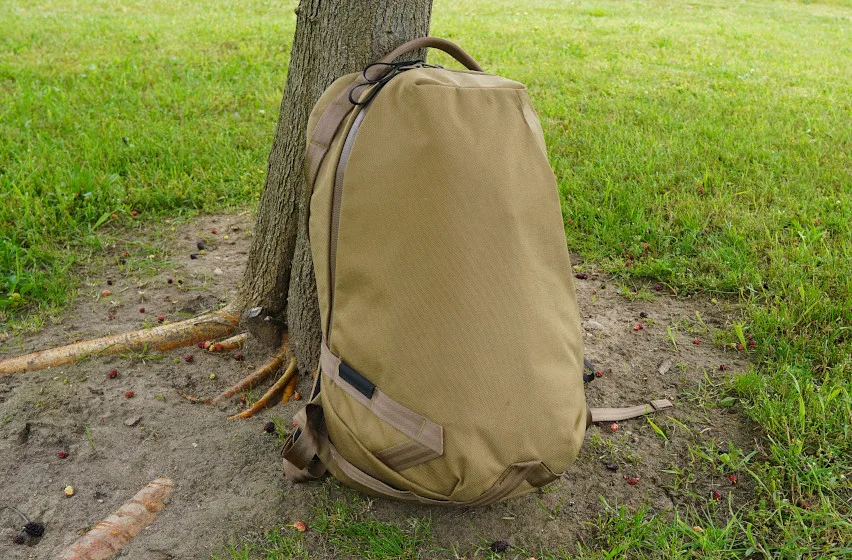
I like the smooth strap-free construction—I rarely got snagged on branches or brush while wearing it. This pack also opens up wide, making it easy to organize and easy to find what I needed with minimal digging.
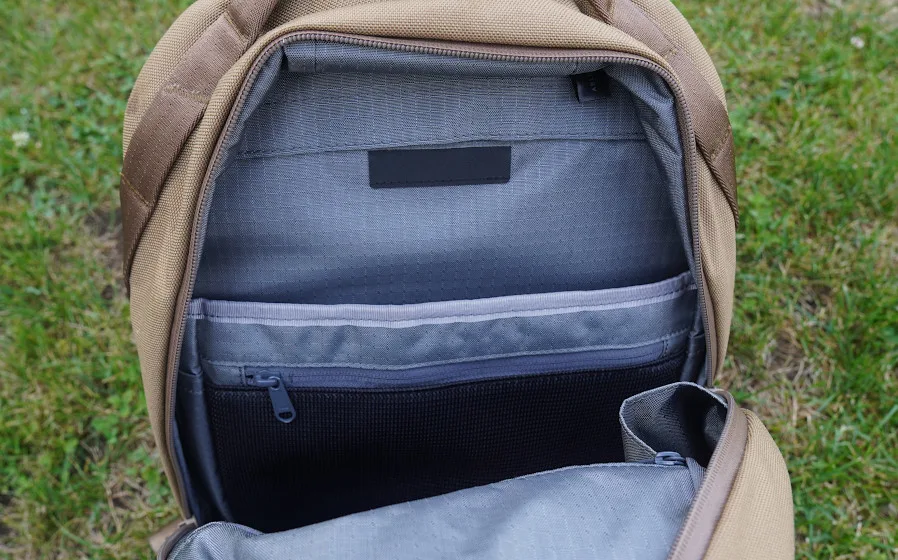
There are two drawbacks to this pack. First, there is no waist strap, which feels awkward since I’m used to one. It is also a little on the small side. It’s best for hunters who like to stay light on their feet with only the essentials.
Ultimately, this backpack's best feature is its versatility. You can use it for everything from day hunts to hikes to commuting to the office with your laptop. For $139, there is a lot of value in this pack.
Best Day Pack: Magellan Outdoors Pro Hunt Day Pack
Specs
Material: Cordura
Size: N/A
Dimensions: 25” x 15”
Weight: N/A
Pros
More affordable
Lots of storage pockets
Hydration bladder included
Cons
Noisy zippers
Not water-resistant
Magellan Outdoors—an Academy Sports house brand—is budget-friendly and good quality all at once. Their Pro Hunt day pack is smartly designed and well-constructed. It handled about 25 pounds of weight quite nicely. The shoulder straps are wide and cushy, and they never dug into my shoulders during my testing. I also found the waist belt surprisingly comfortable, even though it’s not as padded as the other bags I tested.
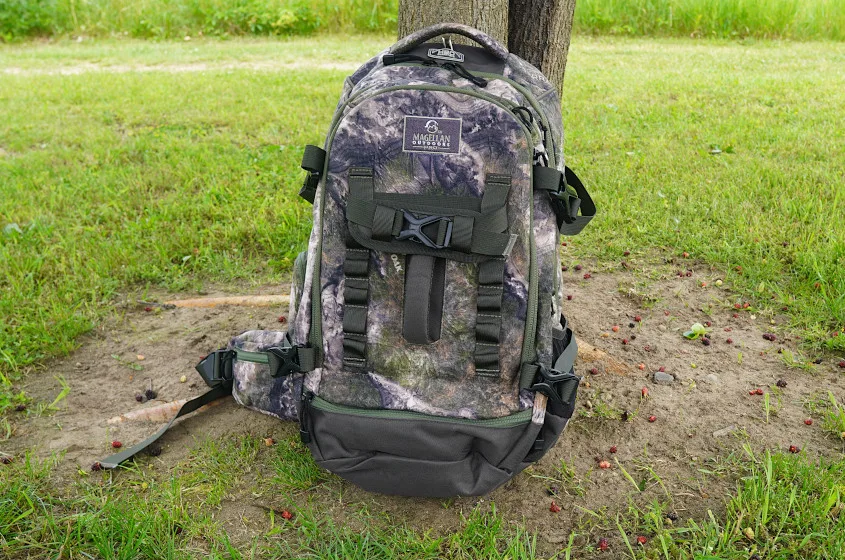
Where this pack shines most is organization and storage. There is no wasted space in any of the pockets here. Additionally, many larger pockets have secondary internal pockets for smaller, easily lost items.

One issue I noticed was with the zippers. They are very loud compared to other packs. It’s not the biggest deal in the world, but something to be aware of if you're trying to be quiet in the woods. The backpack also isn't water-resistant, but it comes with an easy-to-use rain fly for inclement weather.
However, those are small gripes. The value is off the charts with this bag when considering the quality of the stitching and the comfort. Magellan even included a hydration bladder standard, which many manufacturers are not doing. With a price tag of around $100, it’s a bargain.
Best Waist Pack: Sitka Tool Belt
Specs
Material: N/A
Size: 600 cubic inches
Dimensions: 29” x 15”
Weight: 2.6 lbs
Pros
Very versatile
More storage than expected
Surprisingly comfortable
Cons
Expensive
The Sitka Tool Belt is the most comfortable and versatile waist pack I’ve used in my 25-year hunting career. Excessive padding on the inside gives it a very plush and comfortable fit. There is none of the digging or slipping I experience with my other waist packs.
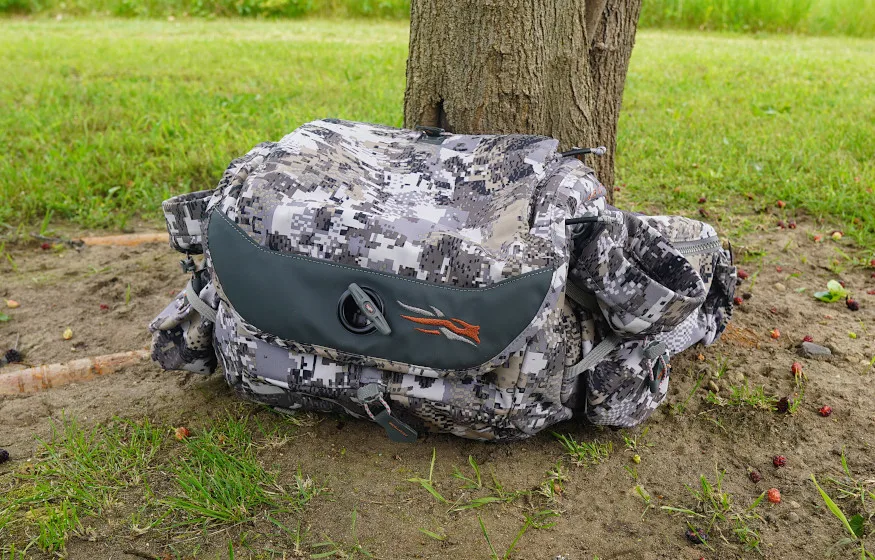
My favorite feature of this pack is the two-way lid that you can access from either side. This allows me to slide it to my front and grab whatever I need from inside without removing the bag. This feature will be a lifesaver during hot summer trail camera battery changes.
Aside from being a minimalist’s dream, this will be a dynamite option for small game, shed hunting, and turkey. I appreciate that Sitka included an apparel carry system for even more versatility.
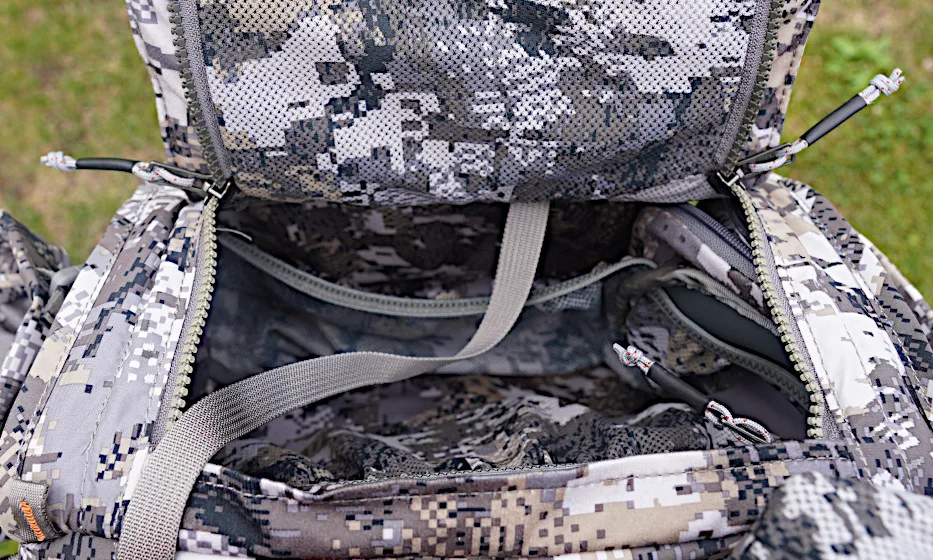
Sitka wasted no space on this one. There are smaller pockets on the interior of the lid that allow it to hang from a tree and keep things organized and accessible during all-day sits. At $240, this is an expensive bag for the size. However, the more I use it, the more I love it. I’m convinced at this point it’s one of those items that’s worth the price of admission.
Best for Saddle Hunting: KUIU Divide
Specs
Material: 330-Denier Cordura
Size: 1500 cubic inches
Dimensions: 20.5” x 9.25” x 7”
Weight: 2 lbs 2.5 oz.
Pros
Smartly designed layout
Comfortable for miles on end
Lightweight
Cons
Zippers could be better
Storage areas are a little small
Most deer hunters will find a lot to love about the Divide—and it's even better for saddle hunters with a modest amount of gear. This was one of the few packs I tested that needed hardly any adjustments. It was a near perfect fit from the get-go. I especially love the way the padding cradled my lower back. I tested this one on a warmer day, but my back never got sweaty wearing it. That's an important when carrying extra tree saddle gear in the early season.
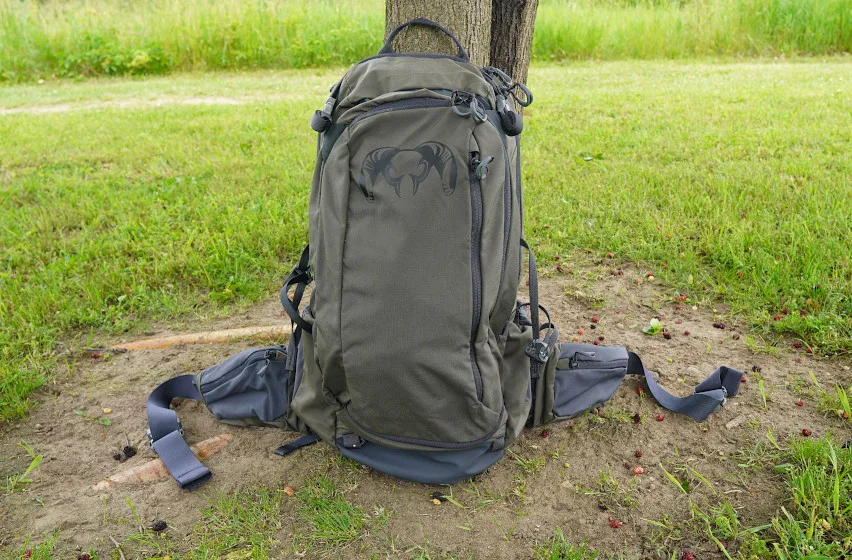
KUIU did a great job with the layout of the internal pockets here. I was able to find smaller items like my car keys quickly without a lot of hunting inside. Having a hydration capability with a pack this small is handy, too.
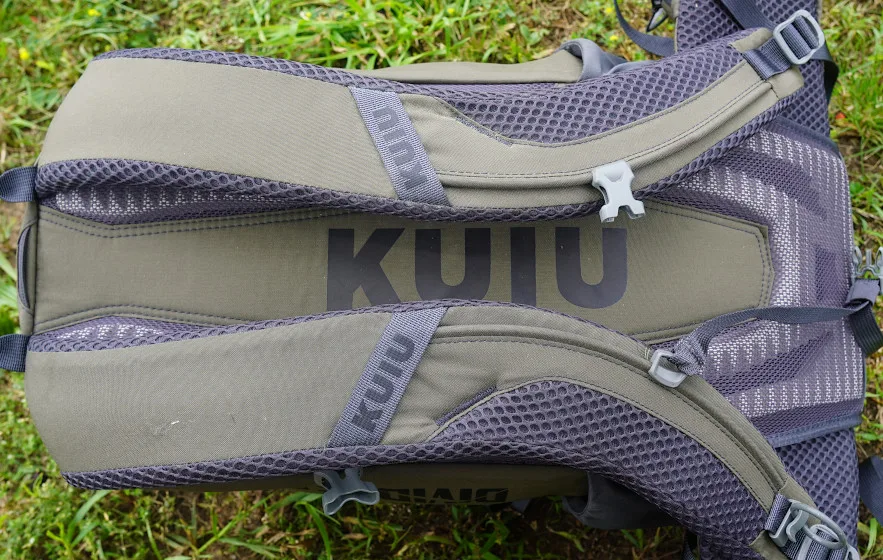
I was impressed with the way this pack kept everything secure. The contents never shifted or moved when I traversed uneven terrain. I tested the 1500 size of the Divide pack, which some hunters might find a little on the small side. But KUIU offers a 2000 and 3000 size for anyone with more gear.
My only concern was the quality of the front vertical zippers. They aren’t the same quality as the main compartment. I’m not sure how these will hold up. However, I love everything else about this pack. The price point of this pack is excellent. I’ve seen it on sale for less than $150, which is a great value.
Best for Whitetails: Sitka Tool Bucket
Specs
Material: N/A
Size: 1800 cubic inches
Dimensions: 21” x 14”
Weight: 2.86 lbs
Pros
Huge storage area
Quiet
Extremely comfortable
Cons
No waist belt
Normally, I want a whitetail pack with more external pockets than the Sitka Tool Bucket offers. However, this slick design doesn’t need them. Hang the pack from the large loop and have instant access to everything inside. It’s like hanging a mini closet full of hunting gear in the tree next to you. This will probably be my new go-to whitetail pack when the season opens this fall.
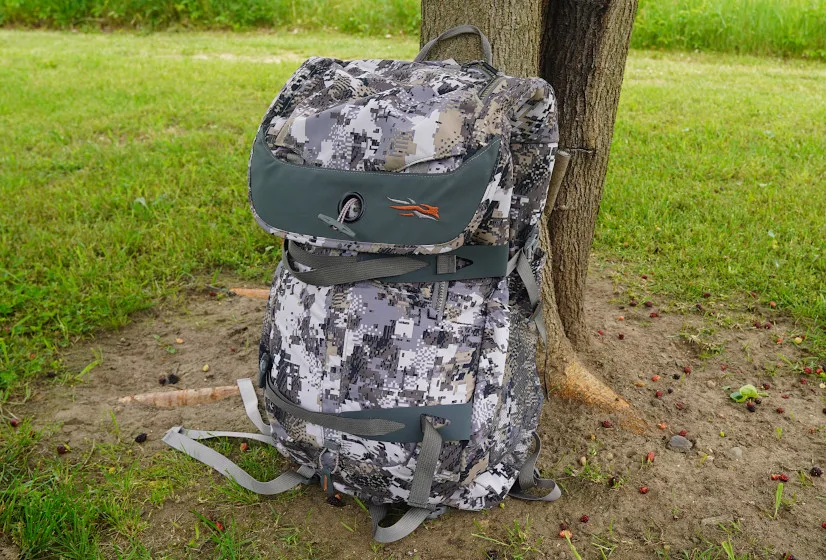
I love the large main storage area. It will be perfect for my ozone generators and camera, which always take up a lot of space. I also noted the material and zippers are very quiet, a huge advantage for wary whitetails at close range. This was easily the quietest of all the packs I tested.
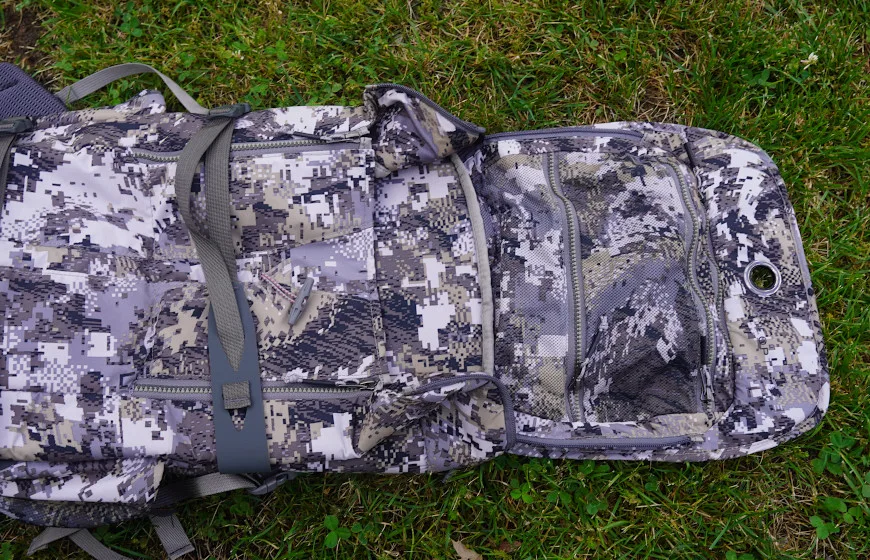
The only thing I don’t like about the pack is the lack of a waist belt. However, it doesn’t affect the fit too badly. The shoulder straps are wide enough to distribute the load nicely. I overloaded this one a bit with over 25 pounds of gear. It was still comfortable during my test walk. I suspect most deer hunters will be far under that number.
Out of curiosity, I tested wearing this pack in conjunction with the Sitka Tool Belt and found they pair perfectly.
Most Versatile: 5.11 Tactical Skyweight
Specs
Material: 330-Denier Ripstop Nylon
Size: 36L
Dimensions: 24” x 13” x 8.5”
Weight: 2.86 lbs
Pros
Comfortable
Sleek exterior
Huge pockets
Cons
Not a huge fan of the waist buckle
If there’s one thing I can say about 5.11 Tactical, they know how to make a comfortable backpack. The wide shoulder straps and lumbar support are solid here. I could make a full range of movements while wearing this pack. At no point did I ever feel the contents shift.
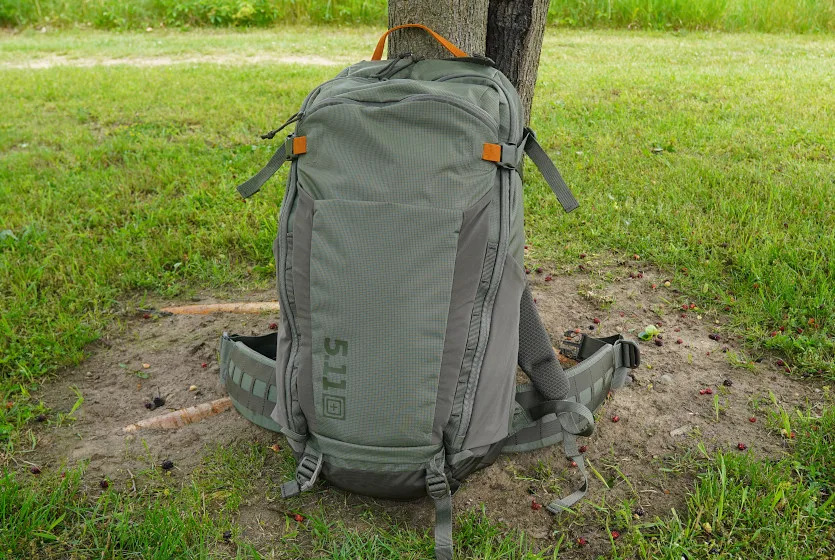
There is only one front external pocket, but it is huge. This pack can hold a lot more than I thought originally. I like the front “shove-it” pocket for an extra hat or gloves. Concerns about snagging on the brush are minimal because 5.11 kept the exterior sleek. I appreciate not having to worry about extra straps going everywhere.
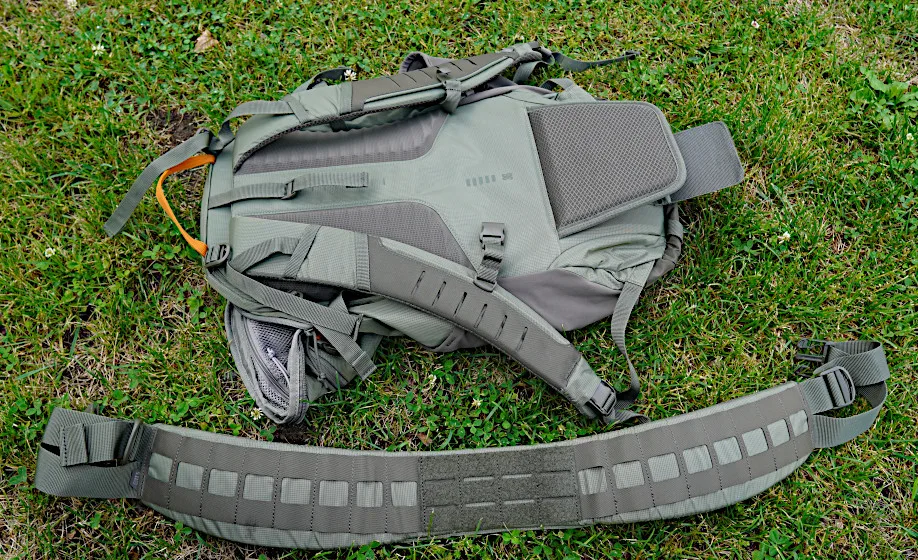
One thing I don’t like is the male portion of the waist belt buckle. It feels significantly less rugged than the rest of the bag. I’m able to flex it with my bare hands quite easily. It’s uncertain how it will hold up in the long term. This is not a deal-breaking feature since it can be easily replaced.
I like this pack for rifle hunters with a modest amount of gear. Mainly because 5.11 includes a rain cover that’s already blaze orange. You won't have to worry about hitting the correct percentage of orange to be legal.
Best Lightweight: Mystery Ranch Gravelly 18
Specs
Material: 330-Denier LP Cordura
Size: 1500 cubic inches
Dimensions: 22” x 13” x 8.5”
Weight: 2.8 lbs
Pros
Unbelievably light
Can be paired with the Metcalf
Top-notch zippers
Cons
Shoulder straps are very thin
Expensive
The idea behind the Gravelly is to “piggyback” this pack onto a larger backcountry pack like the Metcalf. That way, hunters can temporarily ditch their heavier pack for the final part of a stalk on an animal. I love the concept and the construction of this bag. To start, it’s incredibly light. I found it hardly noticeable while empty on my back.
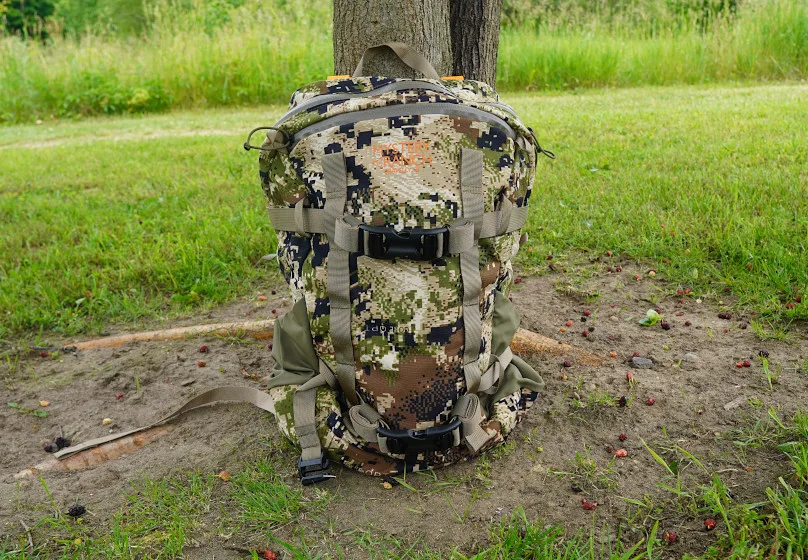
There isn’t anything flashy about this bag. It has a large main compartment perfect for stashing an optic or light clothing item. Then there’s a smaller front pocket perfect for a hunting license and small items. I love that Mystery Ranch went with high-quality YKK zippers on this pack. They are buttery smooth and easy to grip.
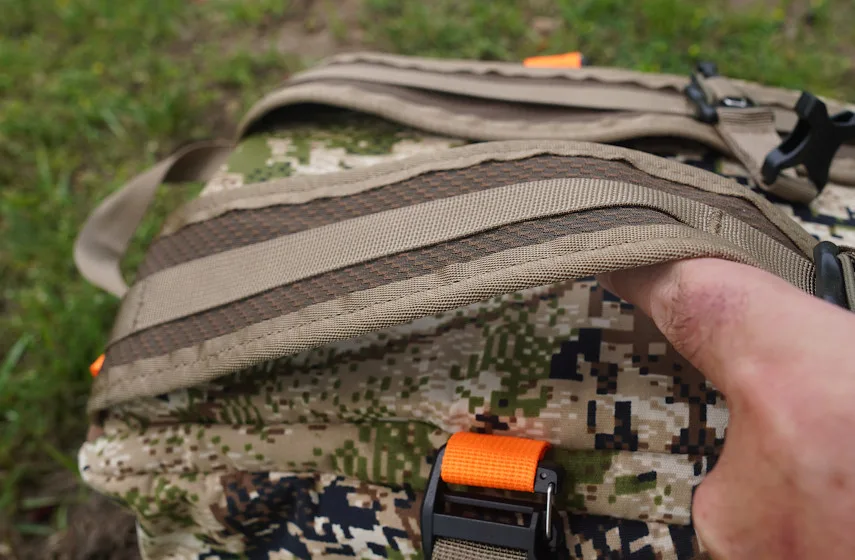
Part of the weight savings comes at the expense of the shoulder straps. They are extremely thin and only minimally padded. I put a 25-pound rucking weight in this pack, which pushed it to the limit. I highly doubt most hunters will push this pack with that much weight.
This is a pack meant for only the essentials on a difficult approach. For that, I think it is very smartly designed.
Best for Elk: Mystery Ranch Metcalf 75
Specs
Material: 330-Denier LP Cordura
Size: 4,575 cubic inches
Dimensions: 31” x 13” x 12.25”
Weight: 5.3 lbs
Pros
Very light frame
Customized fit
Gigantic main storage area
Cons
Excessive straps
Lack of external pockets
The Metcalf was an easy pack to load with excess weight. When I loaded it, I actually thought I would run out of gear before running out of space. I was worried this pack might be a bit much. However, the frame is surprisingly light, which helps keep the rest of the pack’s weight down.
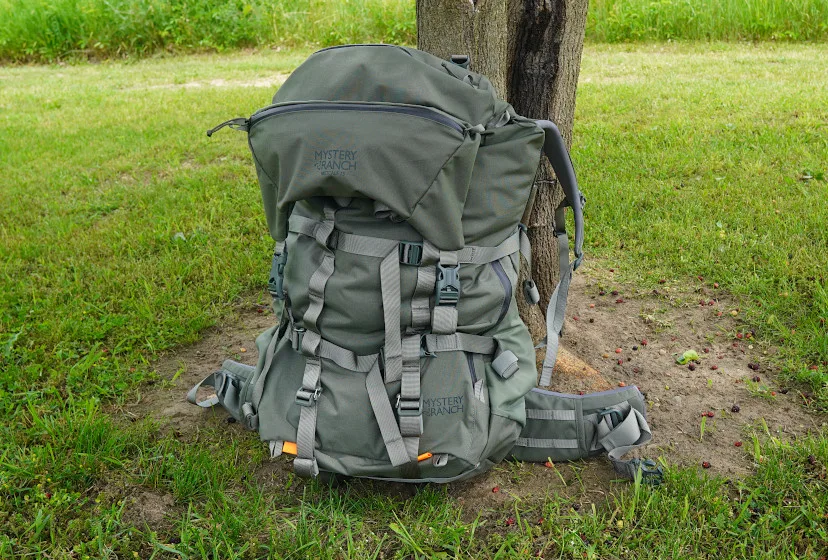
Mystery Ranch went with a roll-top main compartment on this pack. This main cargo area is massive and built for a multi-day hunt. The YKK zippers are excellent, and the large vertical zipper makes accessing the main area easy. That’s an especially handy feature because you can access contents without undoing the roll-top every time.
After tweaking the strap lengths and the ladder system, I found the sweet spot for comfort and had no issues wearing this pack for hours.
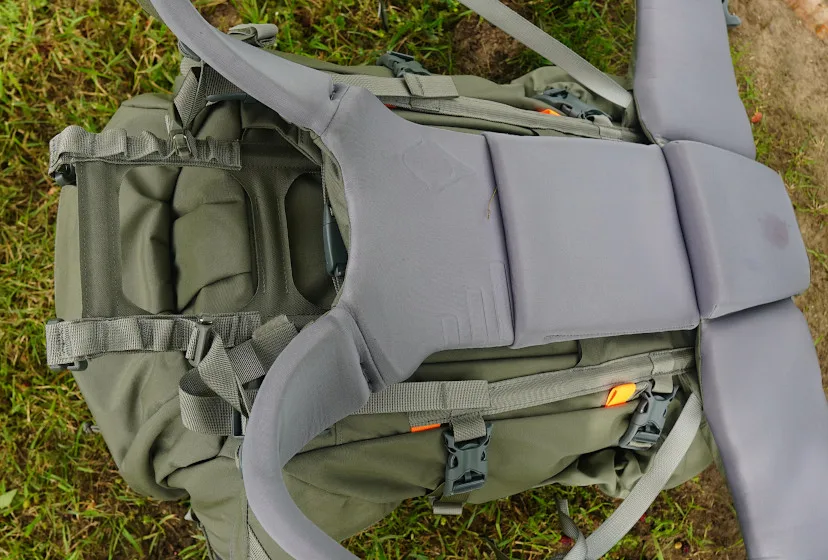
The straps on this pack are more excessive than any other packs I tested. Fortunately, some are just compression straps and can be easily removed. Still, it looked like a jumbled mess the first time I saw it. There is also a lack of external pockets for smaller items. The solution for that appears to be Mystery Ranch’s Gravelly 18 (also on this list) because it piggybacks this larger pack.
The Metcalf wasn’t built for whitetail hunts in cornfields. This is a serious backcountry pack built to be a meat-hauling machine.
Best Blind Bag: Tom Beckbe Blind Bag
Specs
Material: Nylon and Canvas
Size: N/A
Dimensions: 12” x 9” x 4”
Weight: N/A
Pros
Old-school looks and quality
Lightweight
Lifetime guarantee
Cons
Very expensive
Shell pockets need to be broken in
This bag looks and feels like the timeless hunting gear you'd find in Grandad's basement. It’s hard to believe the Tom Beckbe brand is only 9 years old. This blind bag is made of old-school waxed cotton, leather, and canvas. It even smells great because of those materials.
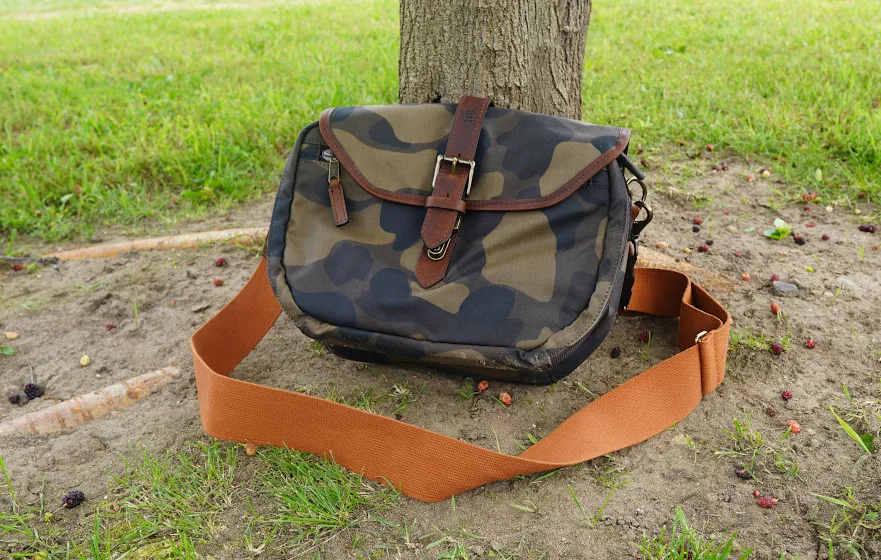
I couldn’t find a single flaw in the construction. Not a single stitch is out of place here. The interior features 10 double loops for shotgun shells. I was a little skeptical of them holding two 12-gauge shells as advertised. However, I was pleased to be proven wrong, even if putting two 20-gauge shells in the loops is much easier. Even the shoulder strap feels old-school.
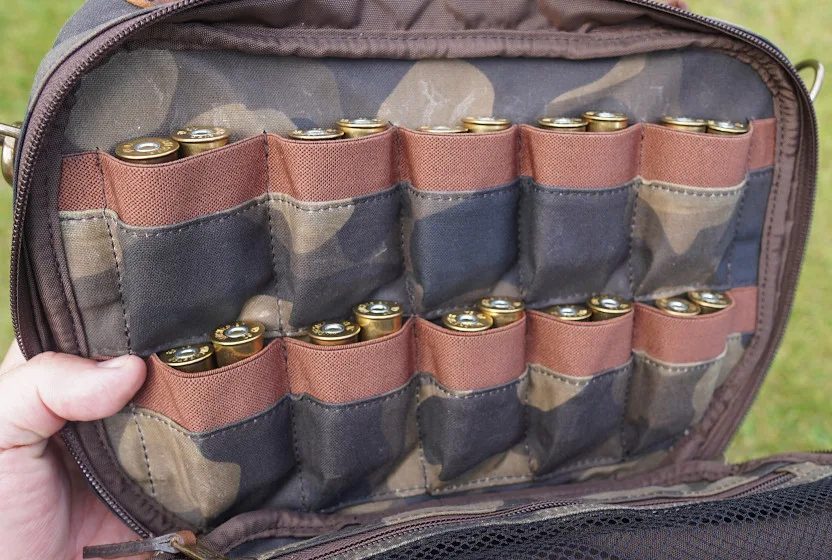
While this bag is built mainly with waterfowl hunters in mind, I like it for upland hunting, too. This would be a great alternative to a heavy upland vest in warmer conditions. The bag's $300 price tag is an eye-opener and my only negative for this bag. However, this bag can easily be passed on to children and grandchildren. It’s that well-built.
As a bonus, Tom Beckbe offers a lifetime guarantee. Simply put, there’s a lot to love here. This bag is a true throwback to when hunting gear was built to last.
How We Tested Hunting Packs
I’ve been hunting for 23 years and used many different packs through the years. Subsequently, I’ve learned what works and what doesn’t. I used a few of the packs on this list in previous hunting seasons. However, since we’re in the off-season, I also did some specialty testing.
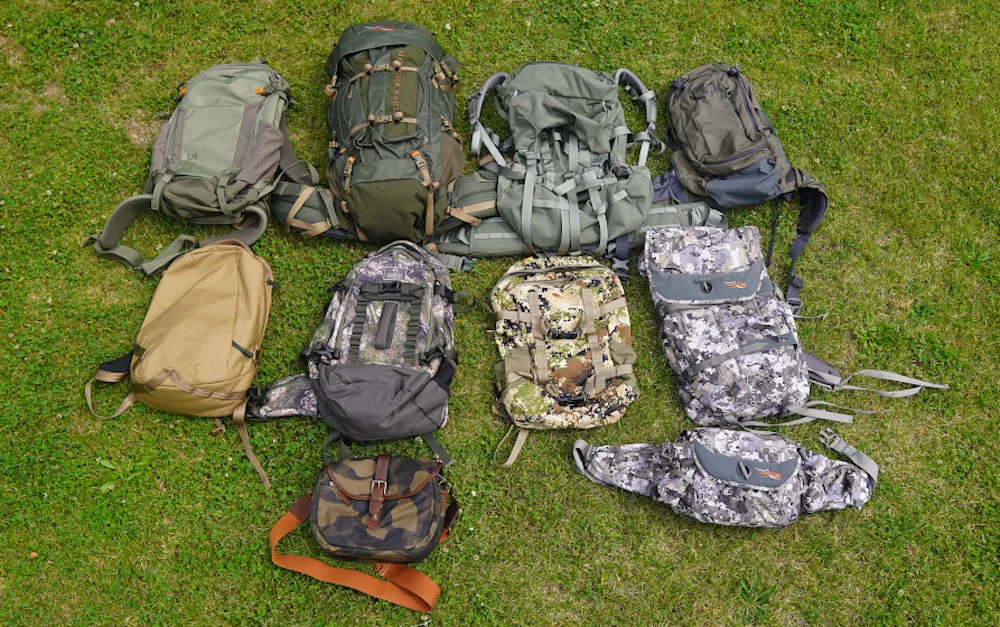
I loaded each pack with weight to see how it would handle a heavy load. I then walked for 6 to 8 miles with every pack. I know some hunters do more than that one way on a single hunt. However, due to time constraints, I had to be content with an abbreviated test for each. I didn’t keep an exact track, but it was at least 15 hours and 48 miles of walking at a minimum. All that before I ever started writing. I also tested capacity and organization by filling each pack with hunt-specific gear.
Otherwise, through my testing, I was making notes of very specific things during the walks:
Comfort: Do the pack’s straps dig or chafe? Are there any pinch points that make it uncomfortable?
Versatility: Can the pack handle more than one style of hunting? Is the storage space adjustable? Are there removable features that function independently?
Load Security: Will a heavy load shift or move while in transit? Can the pack be cinched down to secure lighter loads?
Value: Does the price point of the pack make sense, given the materials and construction?
Construction: Are the zippers high quality and easy to use? Are there any loose threads? Is the material noisy?
Hunting Pack Buying Guide
Many hunting packs work across multiple styles of hunting. However, some hunts call for something more specialized than others. A smaller day pack won’t cut it on a multi-day backcountry sheep hunt in Alaska. Likewise, such a pack would poorly fit a duck blind. Here's what to look for, based on your pursuit.
Frames
Pack frames are only necessary for hunters carrying a lot of gear and, hopefully, meat after the hunt. These frames add more rigidity and help better distribute the load. Many backcountry hunters are carrying at least 40 to 60 pounds of gear. Add in a quartered deer or elk, and it’s easily 100 to 150 pounds on the hike out.
Today’s frames have migrated to more of an internal style that’s lighter and easier on the back. Modern materials allow manufacturers to drop weight without sacrificing strength. I was shocked at how light the two framed packs I tested were. Hunters today don’t need to kill themselves with a hefty external pack frame quite the same way our grandfathers did.
Materials
This is always a delicate balancing act. Heavier materials add more durability, but they're also usually noisier. Packs with a heavier denier count also come with more of a premium price tag.
It’s also worth considering where materials are used on a pack. For instance, I want a more heavily reinforced pack on the bottom in rocky areas, so I don’t need to worry about it ripping if I set it down to rest. Conversely, heavier reinforcements add weight I don’t need while sitting in a tree stand all day.
Waterproof materials—or at least a DWR coating—are important if you're hunting in a wet area like the Pacific Northwest. I’m also a big stickler for zippers. The bigger the pulls, the better. Tiny zippers make packs more affordable but are tough to grip in cold weather.
Straps
Narrow shoulder straps will dig in and become uncomfortable quickly. Wider straps help distribute the weight equally across both shoulders. It’s best to look for packs that have excessive padding to help cushion the load.
I prefer packs that also have a waist belt or sternum strap. Both of those features help significantly with keeping a pack from slipping left or right while hiking uneven terrain.
FAQs
Q: What is the ideal weight for a hunting pack?
I've found the sweet spot for weight to be 4 to 5 pounds without gear. Any heavier will make things more challenging for a bigger load, especially if you're packing meat from deep in the backcountry.
Q: What size pack do you need for day hunting?
It depends on what you're packing into the field. Minimalists can get away with something as small as 500 cubic inches. I have found a 1,500 to 2,000 cubic inch size adequate for deer hunts in the Midwest.
Hunters who glass a lot in the western U.S. or big game hunters on multi-day hunts might want to consider the extra weight of a spotting scope and go for 4,500 cubic inches or larger.
Q: What makes a good hunting backpack?
Organization and a comfortable fit are the most important factors, in my opinion. It’s hard to be stealthy if the pack isn’t comfortable and it's plain frustrating if you can't retrieve the gear you need at a moment’s notice. Thus, packs that keep everything neat, tidy, and accessible are best for hunting. I also like a pack without too many hanging straps or loops that can get snagged on branches or thorns.
Final Thoughts
There are a lot of great hunting packs out there. Ultimately, the Sitka Mountain Hauler 4000 is our top pick for anyone who hunts multiple big game species yearly. It has the versatility for a mountain elk hunt, a high desert pronghorn hunt, and a plains deer hunt. It also has a hauling capacity paired with a light weight that’s hard to beat in this size.
Why Trust Us
For more than 125 years, Field & Stream has been providing readers with honest and authentic coverage of outdoor gear. Our writers and editors eat, sleep, and breathe the outdoors, and that passion comes through in our product reviews. You can count on F&S to keep you up to date on the best new gear. And when we write about a product—whether it’s a bass lure or a backpack—we cover the good and the bad, so you know exactly what to expect before you decide to make a purchase.

